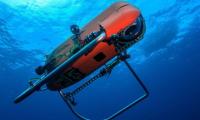Many state-owned airlines fully or partially privatised
Government-run Air India earned net profit of Indian Rs5.41 billion (US$80 million) during fiscal 2014–15; unlike Pakistan public entities in India are not subjected to political recruitment; British Airways sustained losses before being privatised
LAHORE: While all state-owned airlines are perfect statehood symbols that define and represent their countries along with the flags, national anthems and currencies, numerous flag carriers in countries like Pakistan have been found plagued with menaces like excessive debts, over-staffing, political interference and poor management---leaving the policy-makers at the helm of affairs with no other option but to think in terms of privatising them fully or partially.
Even the British Airways was over-staffed before its sell-off.
The company had undertaken the radical restructuring programme necessary for privatisation and in July 1983, just four years before its denationalisation, no fewer than 50 of its senior executives were fired.
Currently transporting 36 million passengers a year to approximately 268 destinations and 97 countries, the British Airways was a major recipient of taxpayers’ money before privatisation, requiring an average input from government funds of £189 million per annum in the early 1980s.
In February 1987 the privatisation was finally consummated when 720.2 million shares of British Airways stock were sold to the public for one billion pounds (US $1.47 billion).
A premier British daily "The Independent" states in its 2012 edition: "Thirty years ago, British Airways (BA) was a loss-making discredit to the nation. Good people within the organisation were stifled by a bloated bureaucracy and a shocking lack of corporate focus on the long-suffering passenger. In common with state airlines from Afghanistan to Zimbabwe, BA was operated largely for the benefit of staff and civil servants (between whom it was sometimes difficult to distinguish)."
In February 2015, the British Airways profits had soared past €1billion (£730million) after tax and the company had promised even more for 2015 with a sharp upgrade to its forecast.
On the other hand, through prudent management and strong will, some fully state-owned airlines like Air India had managed to earn a net income of Indian Rs 5.41 billion (US $80 million) during fiscal 2014-15.Having 23,044 employees, Air India had posted a net profit of Indian Rs14.6 crore in December 2014.
The airline's total revenue had surged by 6.5 percent to Rs20.70 billion during December 2014 as compared to Rs19.44 billion in the same corresponding period of 2013.
Air India had estimated passenger revenue of Rs165 billion during the fiscal 2014-15 and total revenue of nearly Rs215 billion. Together with all its subsidiaries, the consolidated revenue was expected to touch Rs250 billion for 2014-15.
The performance of Air India is surely an eye-opener for PIA's patrons, bosses and staffers, because the state-run Pakistani airline is currently reeling under a massive debt.
In India governments do not make forced recruitment in Air India, railways and other state companies. The expenditures side of these public entities remain under control. But in Pakistan every govt resort to political appointments in public-owned entities including PIA. That is the reason that public entities show profit in India and loss in Pakistan.
As of June 2014, PIA’s cumulative losses were Rs227 billion or over $2.2 billion. Ironically, media reports had surfaced in May 2015 that the management of the Pakistani flag carrier had approved a 17 percent ad hoc increase in the salaries of its staff members and officers despite the fact that the company had declared a Rs1.94 billion net loss during the first quarter of 2015.
And right now, while it certainly wishes to sell the PIA, the incumbent PML-N government is facing a lot of resistance from the airline's staffers and trade unions.
A hectic research undertaken by the "Jang Group and Geo television Network," with academic and statistical help sought from the International Civil Aviation Organisation, reveals that the following international airlines have till date been denationalised by their respective countries:
Sunair Airlines of South Africa, British Airways (privatised in 1987), Germany's Lufthansa remained fully state-owned until 1994 and by 1997 all government shares were sold out, Australia's Qantas (state-owned till 1992), Austria's Austrian Airways (state-owned till December 5, 2008), Bangladesh's Biman Airlines (state-owned until July 23, 2007), France AOM French Airlines, Nordeste Linhas Aereas Regionais and Varig of Brazil, Japan Airlines of Japan (state-owned until 1987), Canada's Air Canada (state-owned until 1989) and Inter-Canadian, South Korea's Korean Air, Lithuania's Air Lithuania, Albania's Ada Air and Albanian Airlines, Portugal's White Airways, Slovakia's Republic Tatra Air, Spain's Binter Mediterraneo, Russian Federation's Aerobratsk, Chitaavia, Kaliningrad Air, Novosibirsk Air Enterprise, Omsk Airlines, Ural Airlines and Vnukovo Airlines, Bulgaria's Hemus Air, Venezuela's Aeropostal Alas de Venezuela (LAV), Israel's Arkia Israel, Ireland's Aer Arann, Chile's LAN Airlines (state-owned until September 1989), Mexico's Aviacsa, Aeromexico, Click Mexicana and Mexicana Airways and Panama's Aeroperlas.
The following airlines are either predominantly or partially owned by their respective states:
New Zealand government holds a 53 percent stake in Air New Zealand, Kazakhstan holds 51 percent stake in Air Astana, the Kenyan government has 29.8 percent share in Kenya Airways, the Russian Federation still owns 51.17 percent shares of Aeroflot, the Israeli government owns 20 percent shares of its El Al Airways that was fully state-owned until June 2004, the Irish government owns 25 percent shares of its Aer Lingus (it remained fully state-owned until September 2006), the French government holds 18 percent share in Air France, the Hungarian government owns just 0.04 percent shares of Malev Airlines, the Italian government owns 49.90 percent shares of Alitalia, Macao's government owns just 5 percent shares of Air Macau, the Filipino government owns just 4.26 percent shares of Philippine Airlines, the Singapore government owns just 11 percent shares of Singapore Tiger Airways and holds 56.76 percent stake in Singapore Airlines, the Argentinian government owns just 1.37 percent shares of its Aerolineas Argentina Airways, Paraguay owns just 5.02 percent shares of its TAM Mercosur (Transported Aereos del Mercosur Airways), Luxembourg holds 73.86 percent share in Luxair, Poland holds 93 percent share in LOT Polish Airlines, Romania holds 95 percent share in TAROM Airlines, Thailand holds 72 percent share in Thai Airways Airlines, Trinidad and Tobago holds 84 percent share in Caribbean Airlines, Turkey holds 46.43 percent share Turkish Airlines, Latvia holds 99.8 percent share in its Air Baltic and Taiwan's China Airlines was fully state-owned until 1991 before 51.28 percent of its shares were transferred to a non-profit Civic Aviation Development Foundation.
It is noteworthy that Ghana Airways doesn’t exist today. It was plagued with safety and reliability issues, and finally shut down in 2005 after the government refused to rescue it from staggering debts.
The Swiss International Air Lines, today a subsidiary of the Lufthansa Group, was formed after the 2002 bankruptcy of Swissair, Switzerland's former flag carrier.
The airline was first owned by institutional investors (61.3 percent), the Swiss Confederation (20.3 percent), cantons and communities (12.2 percent) and others (6.2 per cent). In March 2005, the Lufthansa Group had confirmed its plan to take over Swiss, starting with a minority stake (11 percent) of a new company set up to hold Swiss shares called Air Trust. The Swiss operations were gradually integrated with Lufthansa's from late 2005 and the takeover was completed in July 2007.
Having 7,383 employees, the new airline had annually halved its losses, and in 2006, it had recorded a net profit of $220 million. The net profit for 2007 was $570 million. The net profit for 2007 was $570 million.
In October 2004, from being a state-owned company, China's Air China Limited was transformed into a shareholding firm.
The following airlines are fully owned by their respective states:
Portugal's TAP, Turkmenistan's Turkmenistan Airlines, Tajik Air of Tajikistan, Air Tanzania, Air India, Iran Air, the Qatar Airways, the Sri Lankan Airlines, Eithhad and Emirates Airlines of UAE, the Sudan Airways, the Suriname Airways (SLM), the SyrianAir, Bulgaria's Bulgarian Airlines, Afghanistan's Ariana Afghan Airlines, Algeria's Air Algerie, Angola's Angola Airlines, the Bahamas Air, Belavia Airlines of Belarus, Botswana's Air Botswana, the Royal Bruneir Airlines, Ecuador's TAME Airways, Egypt Air, Ethiopian Ailines, Burundi's Air Burundi, Bolivia's Boliviana de Aviacion, Cayman Airlines of Cayman Islands, Finland's Finnair, Fiji's Fiji Airways, Kuwait Air and Libya's Libyan Airlines and Afriqiyah Airways etc.
Moreover, the Scandinavian Airlines, which is partly owned by the governments of Denmark (14.3 percent), Norway (14.3 percent) and Sweden (21.4 percent), operates 182 aircraft to as many as 90 destinations worldwide and flies to over 50 cities in Europe.
-
 Queens Mother Arrested After Abducting Child From Court-ordered Visit
Queens Mother Arrested After Abducting Child From Court-ordered Visit -
 Sarah Ferguson Ready To ‘spread Her Wings’ After Separating From ‘disgraced’ Andrew
Sarah Ferguson Ready To ‘spread Her Wings’ After Separating From ‘disgraced’ Andrew -
 Finn Wolfhard Shares How Industry Views Him Post 'Stranger Things'
Finn Wolfhard Shares How Industry Views Him Post 'Stranger Things' -
 Dylan O'Brien Gets Nostalgic After Reunion With Old Friend
Dylan O'Brien Gets Nostalgic After Reunion With Old Friend -
 UK Doctors Warn Screen Time Is Harming Children’s Health
UK Doctors Warn Screen Time Is Harming Children’s Health -
 Meghan Markle To Get Police Protection In UK If Travelling With Archie, Lilibet
Meghan Markle To Get Police Protection In UK If Travelling With Archie, Lilibet -
 Spencer Pratt Expresses Hope For Taylor Swift, Travis Kelce's Wedding Invite
Spencer Pratt Expresses Hope For Taylor Swift, Travis Kelce's Wedding Invite -
 Evan Peters Makes Unexpected Confession About 'American Horror Story' Season 13
Evan Peters Makes Unexpected Confession About 'American Horror Story' Season 13 -
 Kentucky Grandmother Arrested After Toddlers With Broken Skulls, Ribs
Kentucky Grandmother Arrested After Toddlers With Broken Skulls, Ribs -
 European Space Agency Hit By Cyberattack, Hundreds Of GBs Data Leaked
European Space Agency Hit By Cyberattack, Hundreds Of GBs Data Leaked -
 Elon Musk’s XAI Launches World’s First Gigawatt AI Supercluster To Rival OpenAI And Anthropic
Elon Musk’s XAI Launches World’s First Gigawatt AI Supercluster To Rival OpenAI And Anthropic -
 Google Adds On-device AI Scam Detection To Chrome
Google Adds On-device AI Scam Detection To Chrome -
 First Ocean Robot Launched To Monitor 'Category 5' Hurricanes
First Ocean Robot Launched To Monitor 'Category 5' Hurricanes -
 Gwyneth Paltrow Gets Honest About Filming Intimate Scenes With Timothee Chalamet
Gwyneth Paltrow Gets Honest About Filming Intimate Scenes With Timothee Chalamet -
 Duke's Peace Talks With King Charles, Prince William: 'Ball Is In Harry's Court'
Duke's Peace Talks With King Charles, Prince William: 'Ball Is In Harry's Court' -
 New Research Finds Back Pain May Disrupt Men’s Sleep Quality Later In Life
New Research Finds Back Pain May Disrupt Men’s Sleep Quality Later In Life



